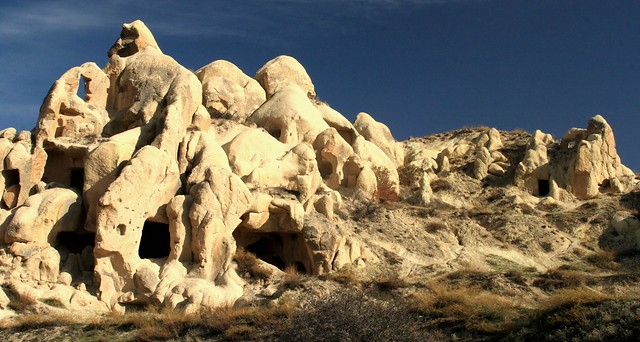
It is no secret that Turkey has a colorful and vibrant past. From the domineering Romans to the banished Ottoman Empire, it has seen civilizations come and go. In the years spanning Turkish history, empires and religions have left their mark including many historical churches. If you read deep enough into the transcripts of the bible, you will also discover that Turkey is home to the seven churches of revelations. Better still, take a whirlwind tour of the historical churches of Turkey to experience the fine architecture and magnificence.
The Brilliance of the Hagia Sophia
The first stop of any tour of historical churches in Turkey would have to be the most famous and renowned church of Hagia Sophia. Built in 360, it began life as a wooden roof building only to be burned down in the years 404 and 532 during mass riots. The last destruction turned out to be a blessing in disguise as two men called Isidore and Anthemius were commissioned to rebuild it and they are credited with designing one of the Earth’s most magnificent buildings.
In following years, it was converted into a mosque and then fell into a dire state of repair until 1923, when the new leader of Turkey, Mustafa Kemal Ataturk, decided the fine architecture and magnificent appearance should be admired by all. It became a museum showcasing the best of Christianity and Islam and is today one of the world’s most popular tourist attractions.

The Red Basilica in Bergama
Leaving Istanbul, we travel down the west coast of Turkey to the Red Basilica in Bergama. This impressive church was built in the 2nd Century only to overcome near-destruction after an invasion by the Arabs in the 8th Century. The church has a prominent position in the town and a visit should also be combined with a trip to the local museum and Acropolis. When it comes to red brick structures that played a major part in history, the Red Basilica certainly claims a leading position.
The Humble Church of the Virgin Mary
We set off from Bergama to the town of Selcuk, which is home to the Church of St Mary, a building with great significance for Christians and Muslims. In the early 19th Century, a nun had visions of the last resting place of the Virgin Mary. Two gentlemen followed her visions and discovered an old stone house high in the hills of Selcuk, just as the nun described.
When you visit, be sure to drink water from the fountains as they are said to bring fertility, good luck and health. Combine the visit to the church of St Mary with a tour of Ephesus and then head to the next destination of historical churches in Turkey.

The Cave Churches of Goreme
Visiting Goreme is a must as there is an abundance of historical churches all over the region. For many years, Christians had to practice in secret and were terrified of the Romans. They formed churches from the soft volcanic rock that the Cappadocia landscape is well known for. While the architecture of the cave churches is not of great size or magnificence, the original mosaics that depict the life of Christ are.

The Church of St Nicholas
From the rugged landscapes of Goreme we head to the South West coast to the town of Demre. This is home to the church of St Nicholas who was the bishop of St Myra, the saint of sailors and children and later claimed fame as Santa Claus. The church is open all year round, however, festivals are held on 6th of December which is the feast of St Nicholas. The original Sarcophagi of Saint Nicholas lies in the north corridor off the main passage.

The Simple but Magnificent Cave church of St Peter
Located in Antakya, this church is believed to have been built by St Peter himself. It is a simple structure yet it boasts an original alter, a stone throne and the original mosaics can still be faintly seen on the walls. Whether or not you believe that the church was the brainchild of St Peter, it is important to know that he did preach in this area at the time of construction so it is quite possible that he played a major part in forming this building, parts of which have stood the test of time from the 4thCentury.

The Sacred Akhtamar Church
At the furthest East point of Turkey is Lake Van, and in the middle of that lake stands an island which is home to Akhtamar church. Dating back to the10th Century, this church saw people from all walks of life until the 19th Century when it was abandoned. Any visitor will instantly note the superb Armenian architecture that was refurbished in the years after 2005. Out of all the historical churches in Turkey, the Akhtamar can claim its place as one of the most impressive due to the Gothic-like structure, the remote island location and its colorful history.

Sumela Monastery and Church in Trabzon
The last stop on our whirlwind tour takes us to the Black sea region on the outskirts of the city of Trabzon. The Sumela monastery and church has an impressive history dating back to 386 AD, however it is more famous for its peculiar location on the steep edge of a cliff face. The monastery is open all year round apart from on the 15th of August which is the assumption day of St Mary and passes are required.
The historical churches of Turkey are the gateway to the country’s glorious past. Turkey’s history has shaped its present day attitude on preserving with the highest integrity, the footsteps of our ancestors.


Natalie Sayin, My Destination Cappadocia
December 2011
December 2011
Photos added by Destination Expert.
No comments:
Post a Comment